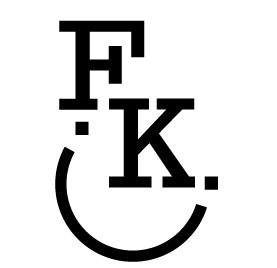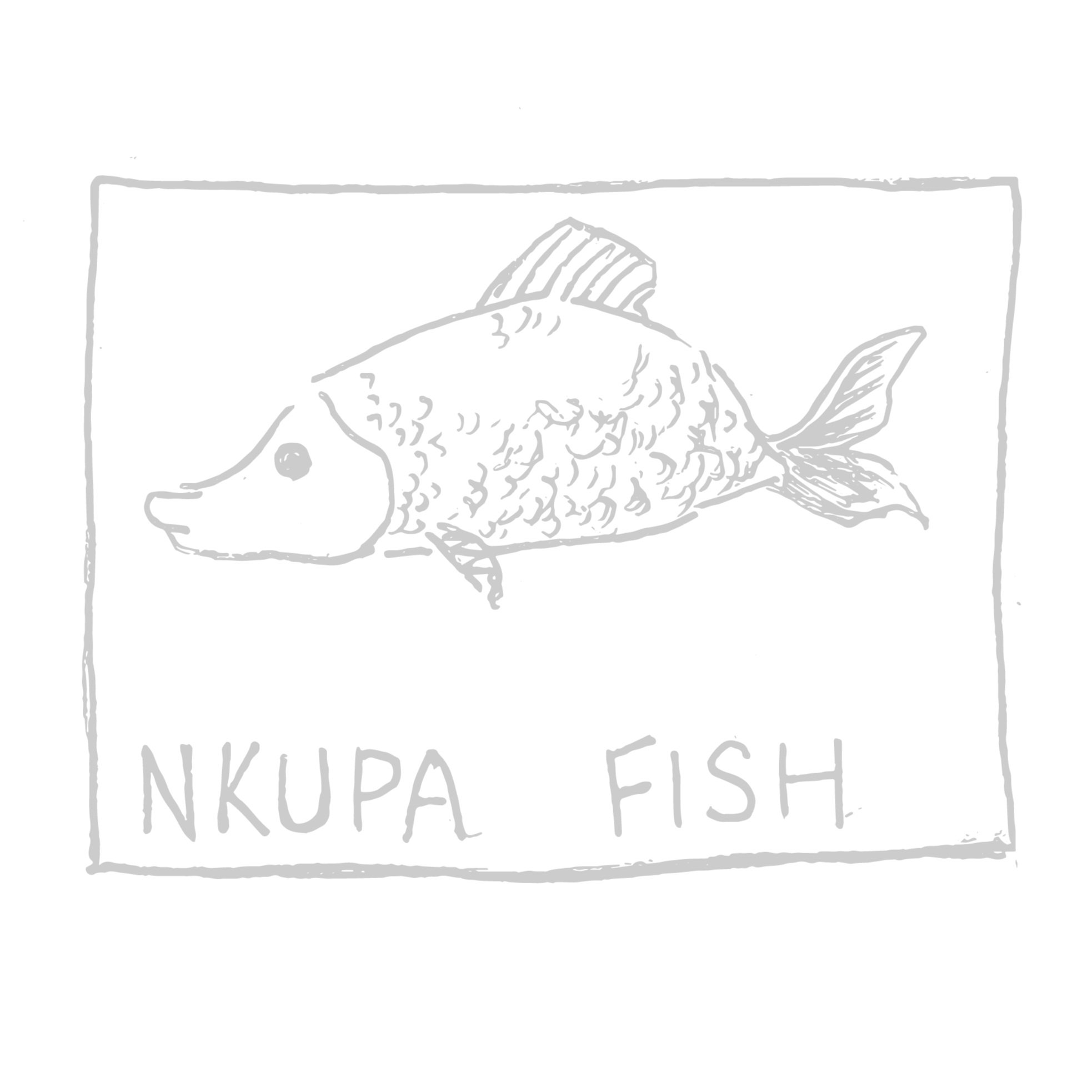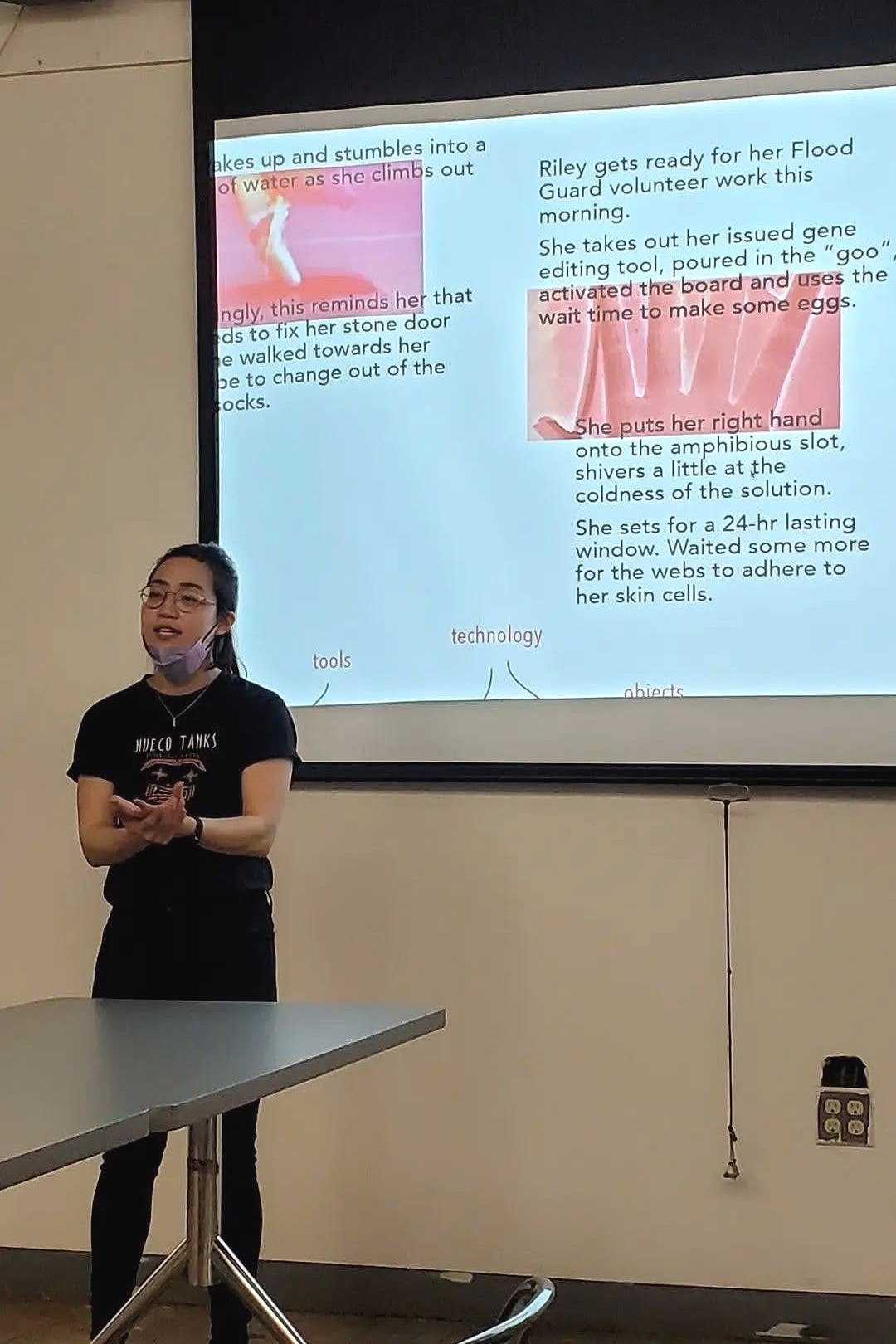Riley
Speculating a Future (and maybe magical) World
for Climate-Driven Solutions
Brief
Build a world with defined rules based on research of exiting subcultures. Speculate future scenarios in which black swan events changing the definition of human beings have taken place, and create a persona and a prototype artifact that insinuates the future scenario’s norm.
Roles
Research/Concept/Strategy/Communications Design/Product Design/Prototype Building/Illustration
Client
Pratt Institute Design Future student brief
Advisor
Tom Klinkowstein
"The future is already here. It is just unevenly distributed.” — William Gibson
Concept art of Akubatula & Pahama, a dual-nation world.
What if extreme weathers pushed us to reconsider established social rules and ethical boundaries?
The worlds of coexisting nations — Akubatula and Pahama — each have their own perils. The first with monthly alternating altitudes and extreme colds that kept the population low, the latter with worsening seasonal high floods that threatened to take over all lands and lives.
The scientists of Pahama had a breakthrough in gene editing, and the people were ready to do whatever it takes to improve their quality of life...
Taking a Page from
the Art of Soft Worldbuilding
“…when worldbuilding, you don’t need to feel compelled to justify everything you create, especially things that are relevant to sit up and payoff. Things can just be strange, bazar and nonsensical, provided that the audience/reader sees that “more profound” meaning to ask questions, to create particular atmosphere, vision, or characterization.”
Fiction classics such as Lord of the Rings and Star Wars are examples of hard worldbuilding, in which the world’s laws of physics and happenings follow strict established logical sense.
However, in the case of soft worldbuilding, what is not clarified but inferred and felt, create an unique opportunity for the audiences to complete the stories on their own, in their own ways.
When worldbuilding for speculative designs, soft worldbuilding becomes my choice of methodology.
In this excerpt of soft worldbuilding research, Studio Ghibli and Walt Disney are two forerunners that I’ve analyzed.
Whereas Studio Ghibli uses subtle visual transitions to inform the audience — subconsciously or consciously — of the changing moods, Walt Disney artists uses periodic stylistic motifs to create visual relevance that is seen and felt yet not said in their animated films.
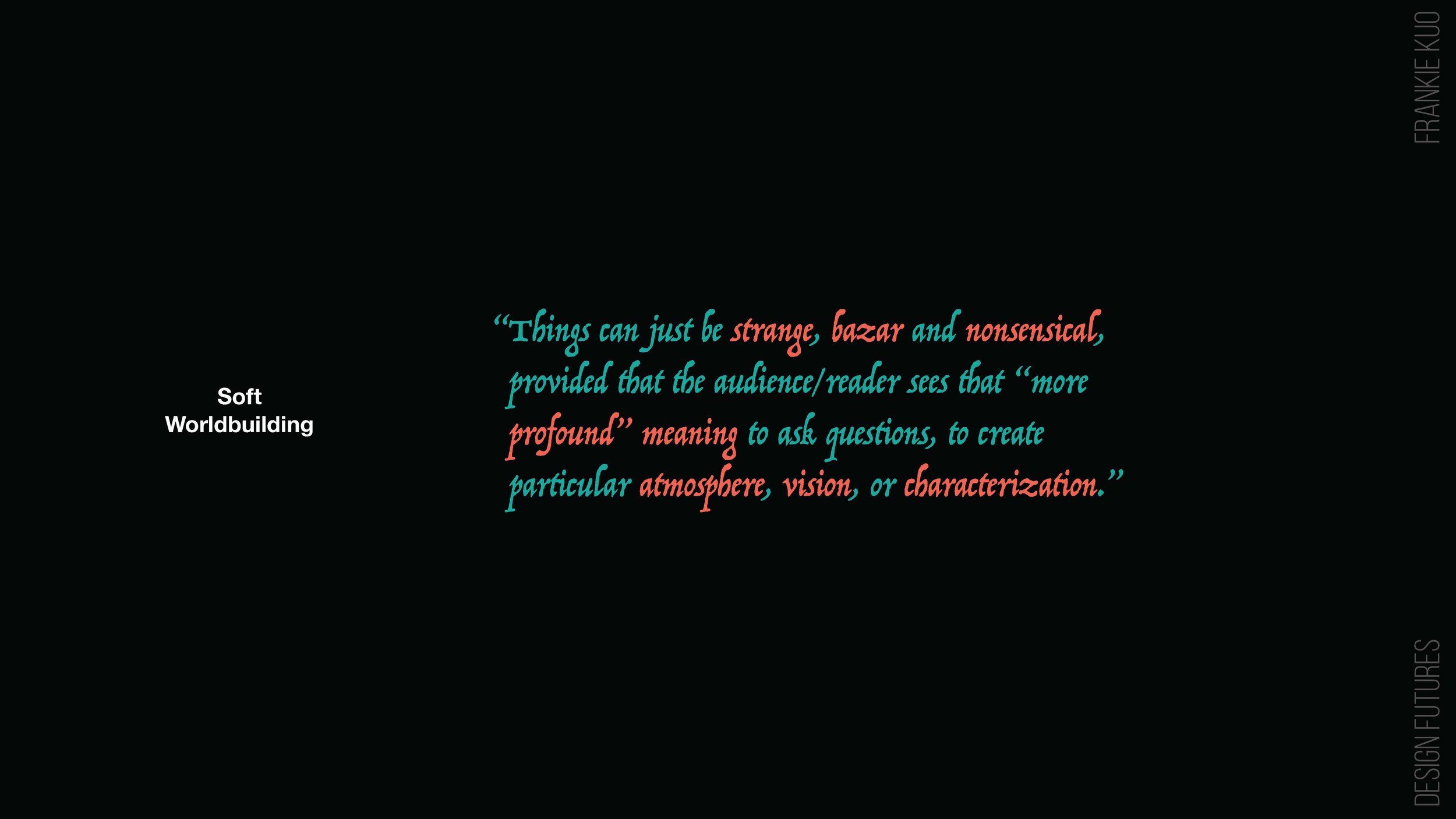

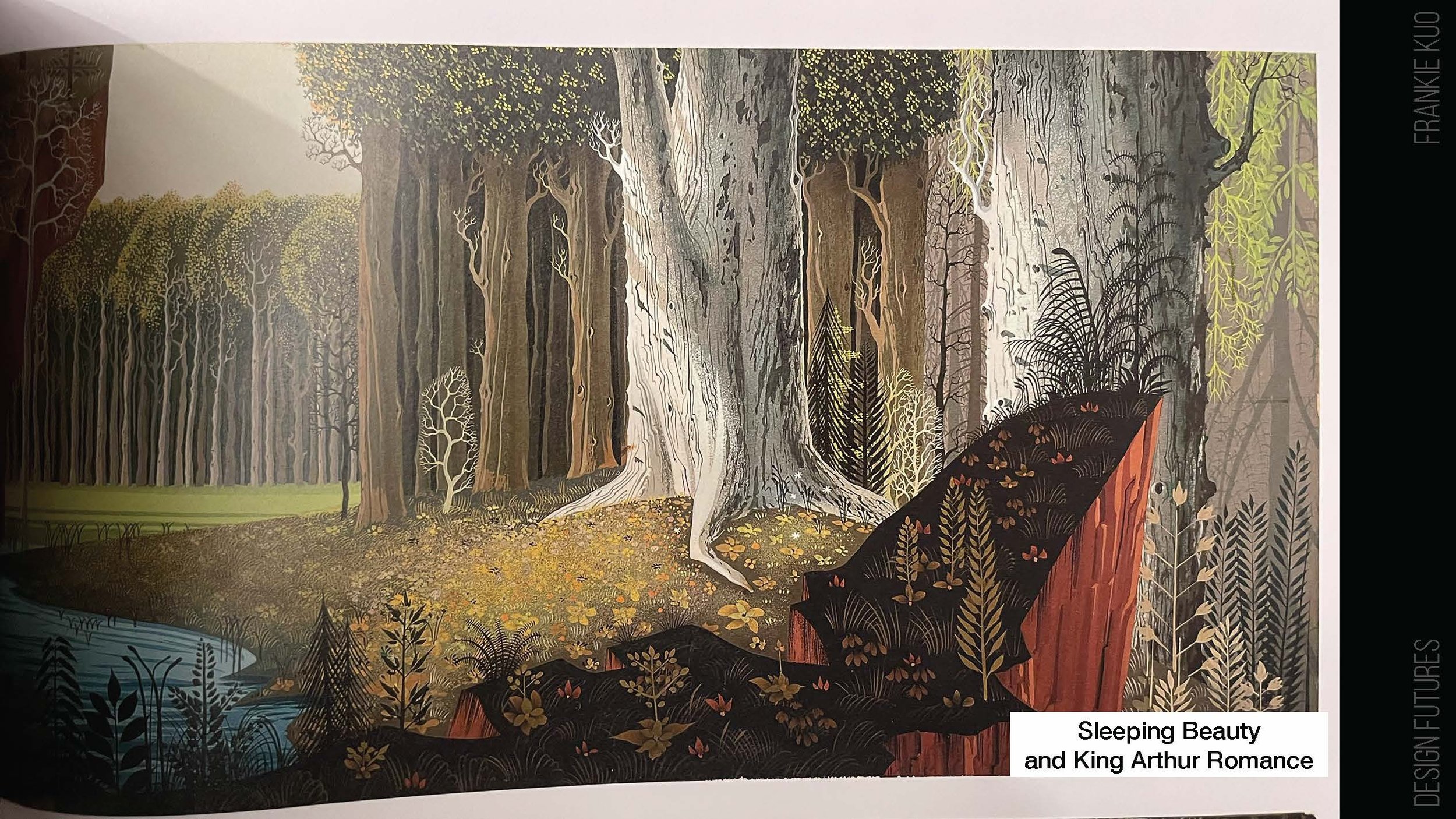
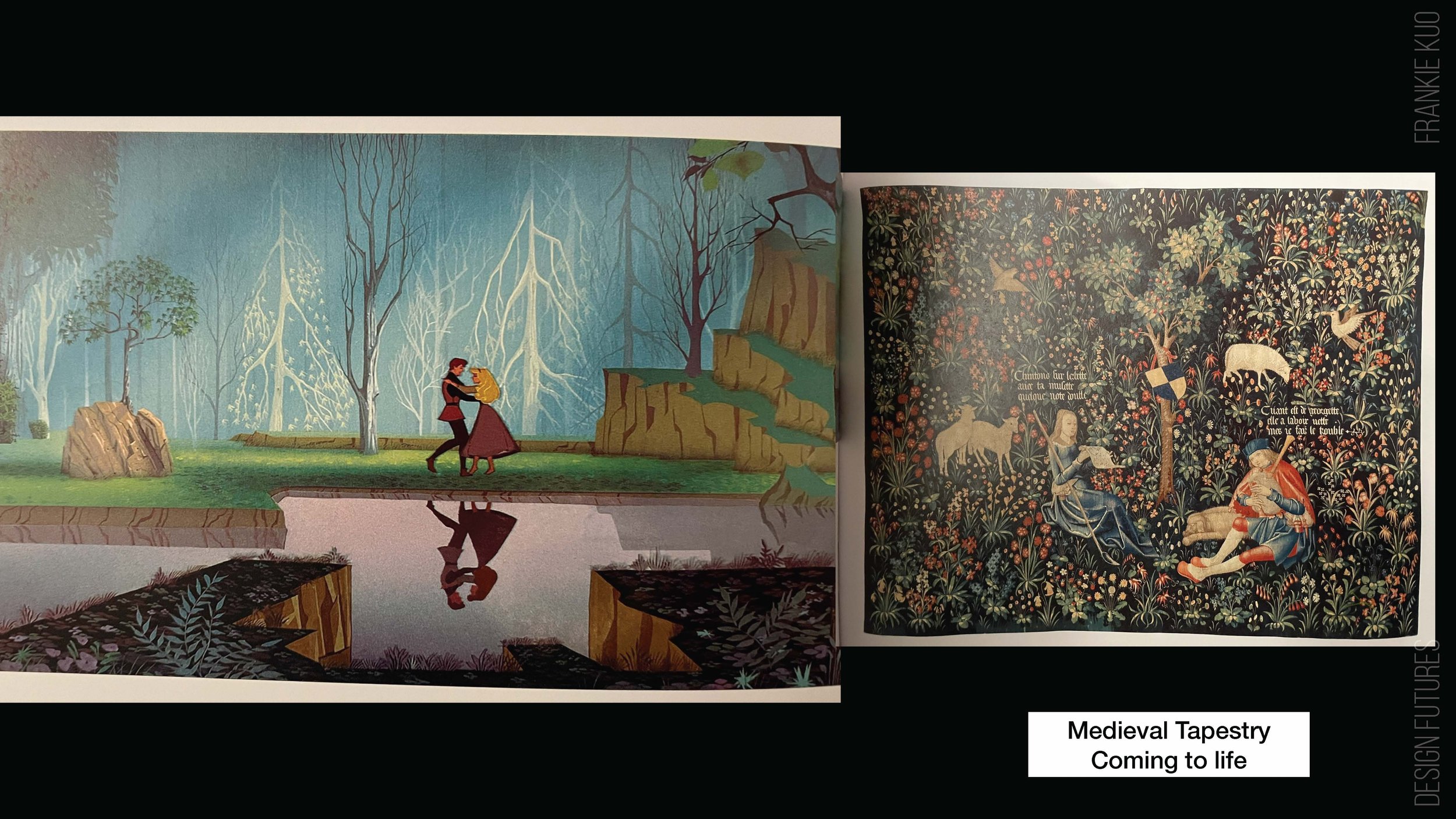
World Map of Akubatula & Pahama
The world map of Akubatula & Pahama.
India ink and fountain pen on cotton watercolor paper.
Seasons
Cycles of Akubatula’s Metsi and Batile seasons.
Cycles of Pahama’s Inflamable Winters, High Tide Summers, and Green Seasons.
Pahama’s Inflamable Winter
Akubatula’s Metsi
Pahama’s Green Season
Akubatula’s Batile
Pahama’s High Tide Summer
The Metsi Climb
Architecture and Crops
Making of the World
Part I
Cultures | Identities | Time
A culture’s way of time perception feeds into their value systems,
cultural custom, social structures, physical infrastructures; reversely, their immediate environment and way of life contribute to their way of time perception.
Part II
Future Casting | Discursive Artifact
“They took stock of trends in the present, jumped many years into the future, described plausible worlds created by those drivers, worked backward to develop stories about how those worlds had come to pass, and then worked forward again to develop robust strategies.”
Part III
Persona | MOOM
MOOM stands for the moment of organic origin, much like a hero’s origin story. Having an origin story makes our persona more real, grounds the experience into detailed folds of the built world. From it we may infer the touch points of a persona within our created world. When done right, it feels much like a process of exploration, instead of forced creation.
Part I
Cultures | Identities | Time
The method that a culture uses to qualify and understand time gives hints to how the culture considers its past, present and future. This tendency determines the culture’s perception, and decision making from daily lives to societal operations.
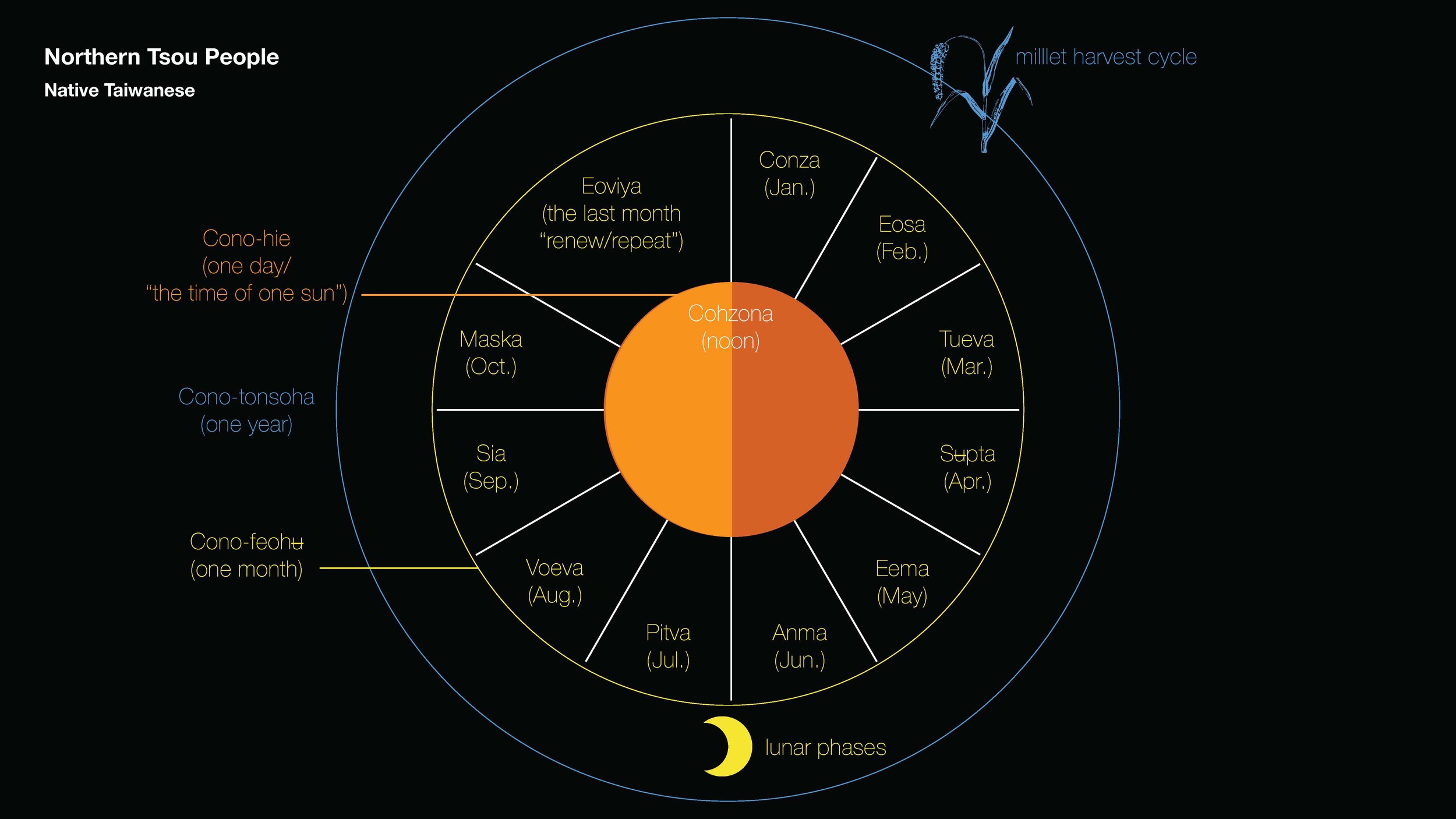
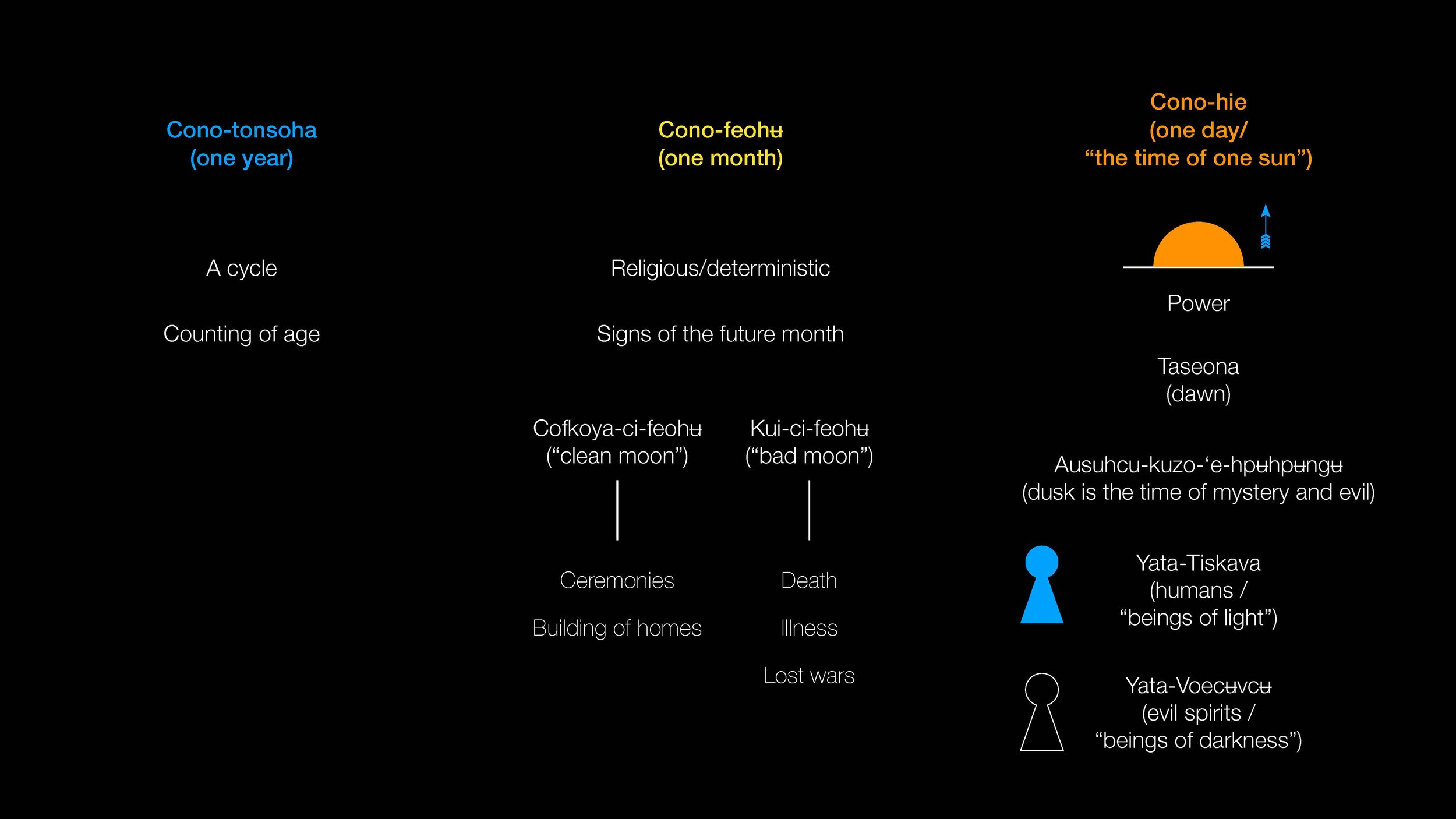
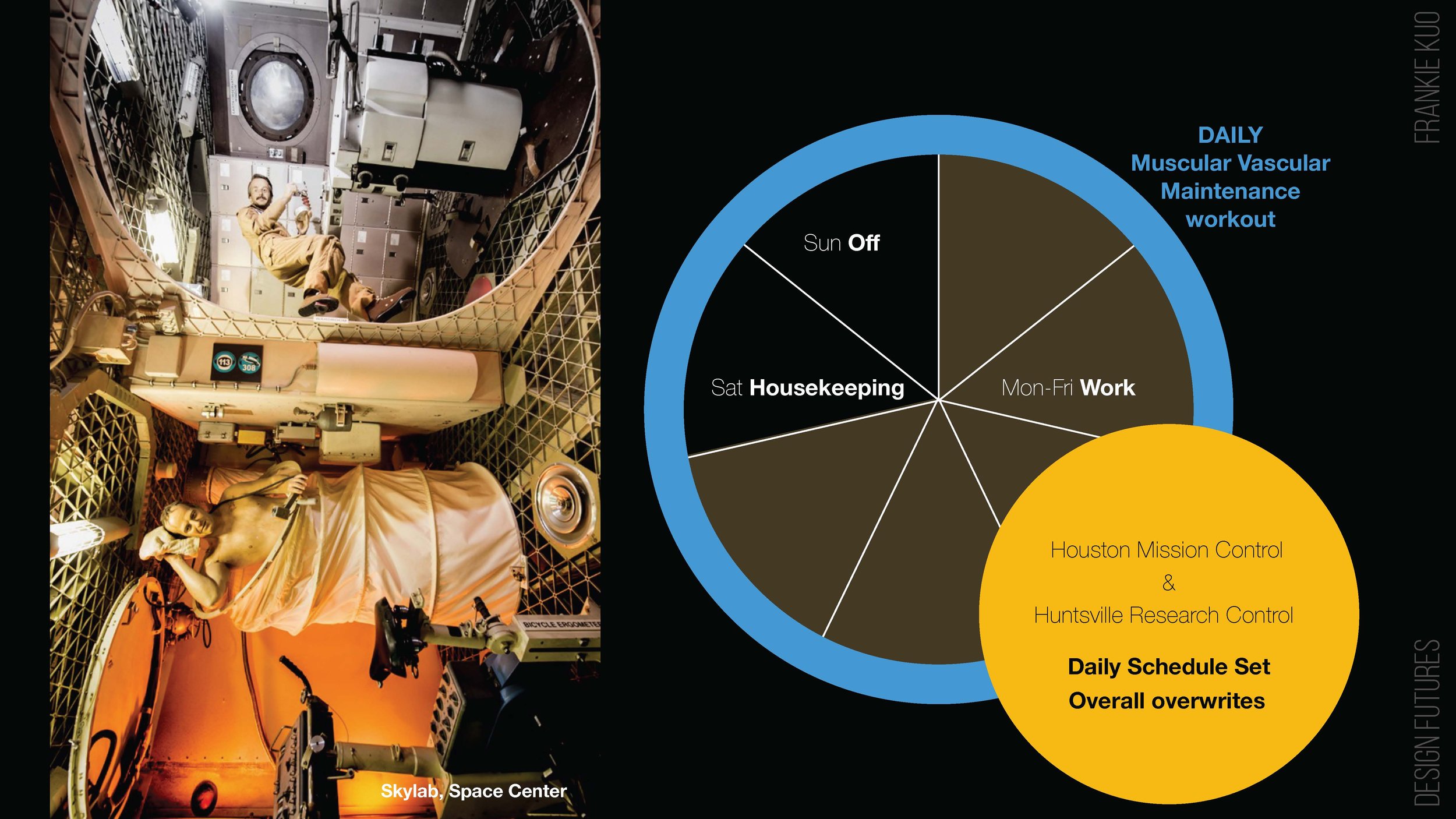
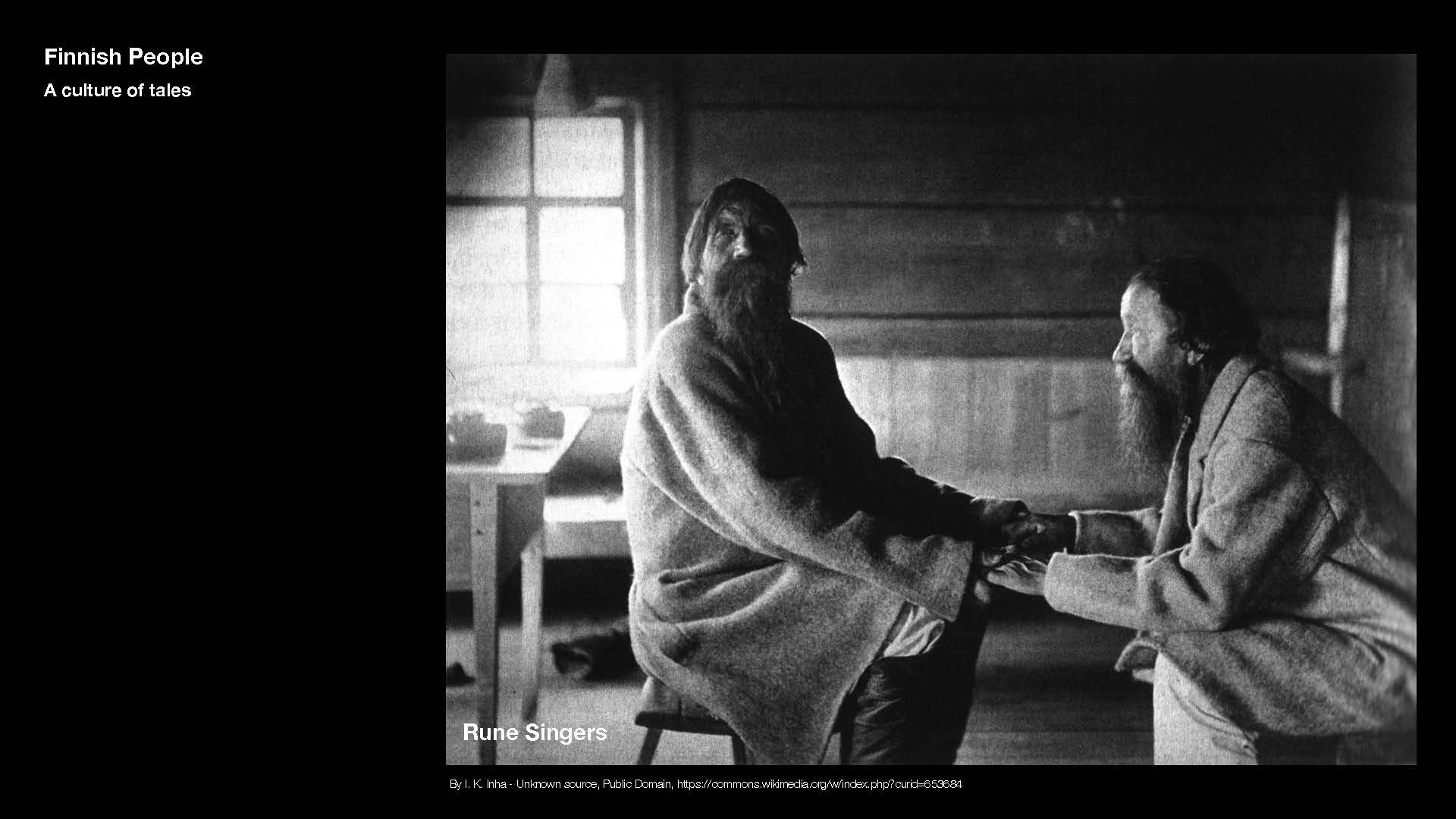
Part II
Future Casting | Discursive Artifact
Future casting creates conditions — such as changes in policies, given historical events, given social trends — that form the boundaries and anchors around and by which the created world is built. Successful casting is critical for the speculative scenario to function at its best. Stretching the envelop of plausibility, it suspends its audience/user with just the right amount of familiar reality to relate, yet enough offset to push one’s assumptions beyond the given norms.
A discursive object is one that inspires and guides conversations over the implications created by its function or form. A discursive artifact, in the case of worldbuilding, is one that seems to have been taken from an ordinary desk in the created world, used as a point of contention to solidify the make-belief conditions of the world.
When future casting, a successful discursive artifact aptly puts its handler into a plausible scenario, in which the user may begin to consider personal emotional and intellectual triggers to its use, thereby making relevant responses that hypothetical discussions do not afford.
Mockup of The New York Times headline in the year 2032, on Sunday March the 6th. In this future scenario, extreme flooding conditions in Pahama has pushed the country to except gene editing as the necessary next step for survival.
Photoshop simulation of Pahama stone houses being swept away by catastrophic flooding.
A Collapsing World on the Brink of Transformation
There are four future casting archetypes for foresight studies, theorized by Dr. Jim Dator in his studies for social change issues: continuation, collapse, discipline, and transformation.
Normalizing Gene Editing on the Civic Level
Inspired by Elliot Montgomery’s Dollar Project, I realize that the popularization of gene editing on the affordable and temporary level is a great way to introduce the discursive artifact.
Discursive Artifact Prototype
Temporary Gene Editing Tool: for 6-24 hours of webbed hand. A future artifact.
Silicone, black acrylic panels, 3D printed positive mold, laser cut.
Close up on the gene editing side.
Instruction:Fit hand into mold, pour in solution until surface evens with the top of the surface, set time period of web, turn on device for 15 minutes.
Close up on the back side.
Name of product, and product barcode.
Part III
Persona | MOOM
Day-in-Life User Touchpoints
Riley, the chosen protagonist, seen in her braids wrapped in the traditional cloth, and adult tattoos, sitting in her stone house.
Photoshop simulation using my own photo as base.
A persona is the entry into the world. It is created with designed qualities: behavioral considerations, quirks, pain points, and MOOM story.
As world conditions set the anchors for future casting, attributes of a created persona further provides personal angles through which the audience of the speculative future cast scenario may find relevance as a fellow human being (albeit artificial.) More importantly, the designed qualities further frames the angles of contention, thereby helping the discussions to be focused around designated topics and not get lost.
After all, a world is a big place.
Riley’s persona profile card. Together, the 6 categories of the designed qualities make up Riley’s character, determine her decision making, and give insights to personal interactions in the created world of Pahama.
A-day-in-life touchpoint infographic of Riley in Pahama. From morning to evening, each instance is broken into and described separately as external and internal expressions. The touchpoints are categorized on the top of the graphic to the respective designed persona qualities they reflect. Types of touchpoints span across tools, technology, objects, geography, people. climate, time, belief, decisions, and profession.
Walking through the day-in-life touchpoints.
As seen in Culture & Identity exhibition, Pratt Institute.
